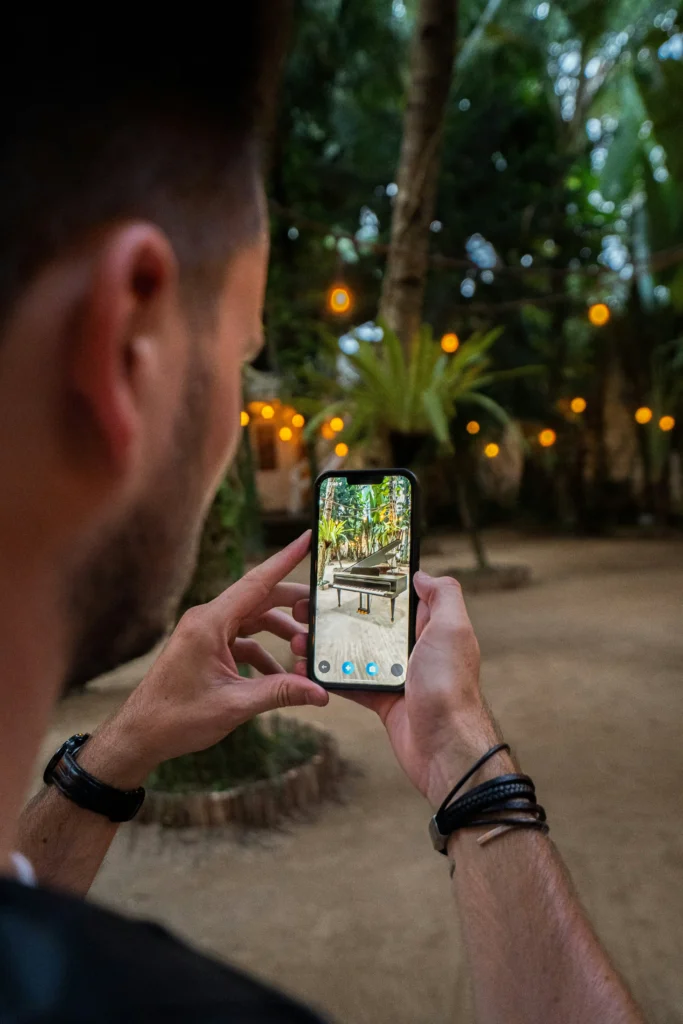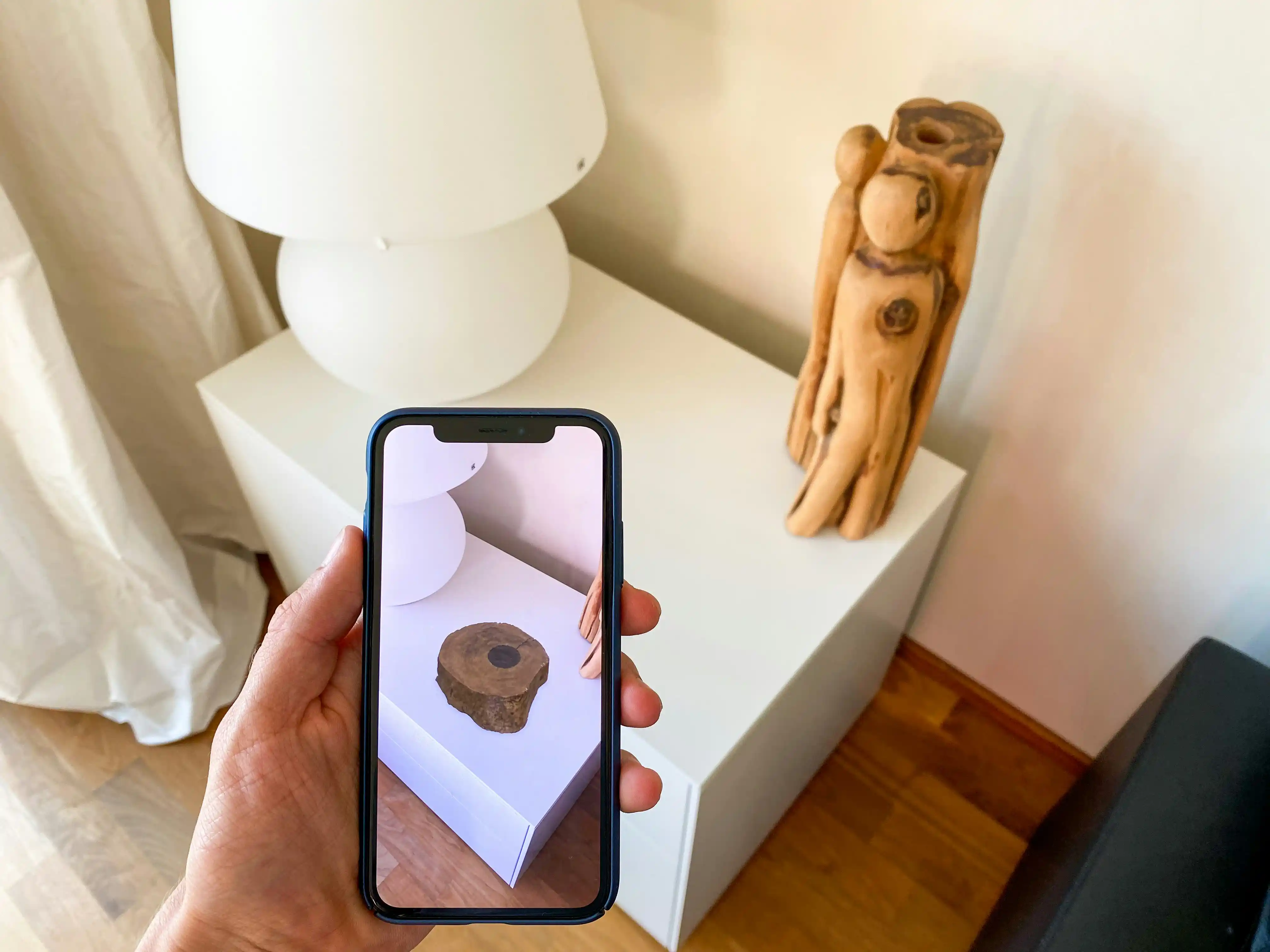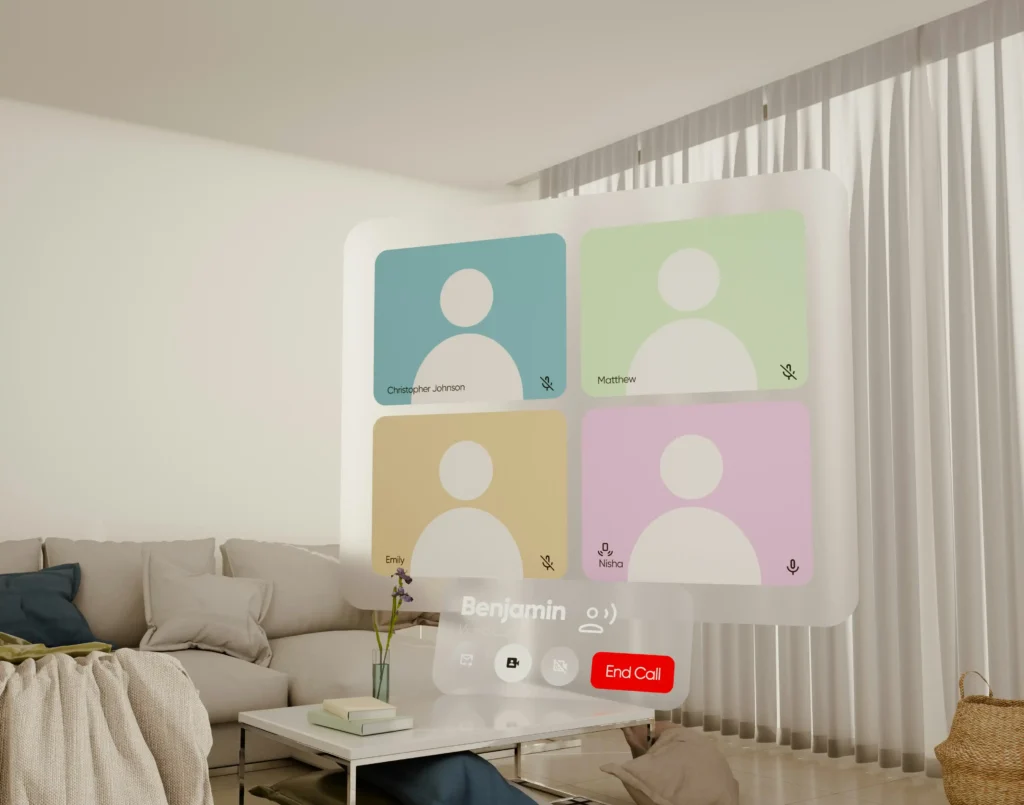After the arrival of Facebook meta, it was clear that augmented reality is the future. However, the metaverse is in its early stages, relying more on augmented reality tracking. That leads to many questions, for instance, what is augmented tracking, and how does it work?
Augmented reality tracking is a specific pattern that an augmented reality app recognizes and then makes a 3D version of it on the app. Once the app recognizes the pattern, it will constantly track the position of the pattern.
It doesn’t matter whether you move the camera or the image; as soon as the app sees a pattern, it starts recognizing it. However, there are also certain limitations. For instance, the app might not be able to track everything since it won’t identify the image.
On the other hand, the database of such apps is increasing day by day. Thus, you can expect them to work better in the future.
AR brings a mixture of virtual and real worlds in front of your screen – a complete graphical experience united with the real world. Companies print AR trackers on a page or card to eliminate such issues. If someone wants to convey multiple trackers on a single object, they can print them on a cube.
Some augmented tracking apps won’t need a pattern or AR tracker to identify stuff. For example, you point the app camera to space and can see a virtual animal, or you point the camera to a person, and they’ll be wearing a virtual costume of your choice.
Different companies have a unique name for their AR tracker. Apple calls it “ARkit,” while Google calls its AR tracker “ARcore.” You can visit the respective app store to find and download AR-based games.
What Keeps Track of Position in Augmented Reality?

Whether you are using the built-in AR app or a third-party app, both of them will track the sensors in front of them. So, the design or pattern they are following must have some sensors installed that contain the design information. You get to see the 3D version of that image because of the informative sensors. How quickly your app responds to the sensor depends on how fast the sensor transmits the data. So, any delay in sending the data can cause problems with the app.
On the other hand, some AR techniques use vision-based tracking. All the AR-based games you see use this technique to track the virtual object with your eyes. That removes the hindrance of sensors and is much more accurate as well.
The sensor tracking is further classified into four more categories: acoustic, optical, magnetic, and inertial tracking. You can look at their name to get an idea of how they work.
Vision-based tracking is further classified into marker-based and marker-less tracking.
Different Types of Augmented Reality Tracking
Acoustic Tracking: This type of tracking uses the sound of an object to track them. Most streamers use this kind of thing to communicate with their virtual self via their microphone.
Optical Tracking: Optical tracking uses the light reflected by the object in front of you. Then the app changes the object as you desire.
Magnetic Tracking: Magnetic tracking uses the strength of the magnets surrounding the objects to learn the movements. This kind of tracking is used to create virtual robots that read an animal’s movement or a human being.
Inertial Tracking: Inertial tracking is more like navigation tracking used in AR/VR headsets to indicate what is in front of you. However, that entirely depends on the algorithm used in the app.
Marker-Based Tracking: This is the most common method, which only requires an image that you can scan via mobile. If the mobile doesn’t have a default AR app, you can use a third-party app that does the job. The mobile will present the information in a 3D model that allows you to study them efficiently. The trigger image must be unique without any stock photos so the app can read it easily.
Marker-Less Tracking: This type of tracking works without any trigger image. It scans the surrounding environment and retrieves the augmented reality content. After the display, you can change the content as you desire.
What is Tracking in Augmented Reality?
You can define tracking in AR as the recognition of the subject that you present before the tracker. However, tracking is not easy as you can’t move around too much and expect it to stay where you want.
Various tracking methods give accurate results and we discussed them above for better understanding. Contrary to what some might think, augmented reality does not use GPS to track the subject. Augmented reality trackers only pay attention to the subject in front of them. As long as you are in the frame or its vision, you are the top priority, but as soon as you move away, they’ll pay attention to the nearest object.
You can use multiple software to track the object or your surroundings. However, people mostly use AR for the avatars, language translation, or checking about the product’s specs from their box. For example, you point your camera towards a Powerbank box; the AR will give you information about its ports. This might sound boring, but for those who are new to purchasing such stuff, AR can help them a lot.
How Does Tracking Work?
The way mobile-based AR works is pretty simple. It uses an easy-to-recognize square marker with prominent position and rotation. Then three steps complete the process: it starts with acquiring the original image from the camera. The second step is about outlining the boundary to isolate the subject from the background. Then the subject is presented in front of you where you can make changes or play with it.
Tracking human bodies is tricky, but we see such applications daily. Attaching markers to every human is not possible. So, the companies use real-world environmental data to overcome the marker’s disadvantage. We use marker-less tracking in such scenarios where placing markers is relatively expensive or impossible.
What Is AR Image Tracking?

AR image tracking is an augmented reality feature where a 2D image transforms into a digital 3D image based on your app. I am sure you have heard of those augmented reality filters where the model’s face turns into a dog or a different face after a few seconds, and that is one example of AR image tracking.
You can use AR image tracking to make 3D videos, 360 panoramas, 3D animations, and much more. However, image tracking will only track 2D images; you can’t expect it to transform a 3D image into something else.
AR Image Tracking Distance
Unlike most camera apps, you don’t have to get too close to the subject for this to work. You can detect an A4 paper size from 3 meters away, and the augmentation works even if the image covers only 1% of the entire screen.
This ability is great if you don’t have the target right in your hands, and it works even if the target is another mobile. If someone has an image open on their mobile, you can use your AR app to transform it.
Advantages of AR Image Tracking
AR image tracking is perfect for advertisements since one image on the banner can relay a lot of information. Companies can even place their entire creation process in one shot to ensure the customers’ safety.
AR image tracking is primarily used in gaming, especially card games where the character on cards comes to life. This is a great way to keep the player engaged in the gaming session for a long time.
Moreover, AR image tracking is excellent in arts and museums since it allows viewers to look at more than just 2D art. The publisher in the art museum can add more details about the painting in their AR app. You can download that app and learn more about the artwork you like. Moreover, some museums have their dedicated tour app where a visual character guides you. That visual character can also detect the employees there using your mobile cam. A combination of marker-less tracking and image tracking can do this trick.
Last but not least, AR image tracking is best for customer campaigns. You see a car outside; you scan their advertisement, and voila! All the details are right on your screen. There is no need to visit their website or search for their work or whereabouts anymore.
What Is Object Tracking in Augmented Reality?
Object tracking might require an extensive database about the products, but when it works, it is magic. Suppose you assemble your PC and have no idea which part to where? So, object tracking in augmented reality can help you identify the objects, and that way, you can put them where they belong.
Object tracking is marker-based, and it needs a target to detect before making any moves. The target could be anything, but it should stay still and have markers on it.
How Does Object Tracking Work?
The technique behind object tracking is complicated, but we managed to narrow it down.
The image in front of the camera has its features stored in the app you are using. So, as soon as you point the camera to it, you see all the details of the object. If it is something new, you can add the missing information to store it in the database for other users.
Then the camera finds the similarity between the reference in the database and the image. After that, it starts showing its features based on the real-world environment. Those features create a 3D image of that target, giving you access to its internal details.
Advantages of Object Tracking in Augmented Reality

With AR object tracking, users can learn everything right on the spot. They don’t have to search for anything as everything in the camera frame is explained right before them. Such type of learning brings confidence in the students as they get their answers right away.
If the organization has the necessary AR training equipment, it is less costly than traditional VR training. All they need is some tablets or phones, and they are good to go, rather than providing VR gear to everyone, which costs more and demands more maintenance.
On the other hand, object tracking requires many software and hardware updates. If these updates are not available on time, people might not learn anything new. However, one update won’t cost much, and it will bring new stuff for everyone.
Soft skills training is not a forte in AR object tracking. If you want to learn technical skills and processes, AR object tracking is the best. For soft skills, you should opt for VR training. AR object tracking can bring a rich interactive experience featuring 3D objects, but it has some limitations, so we can’t call it perfect.
Conclusion
While this augmented tracking seems incredible, it is still not usable for everyone. Applying this practice in practical life won’t generate many results. But as far as the learning process is concerned, AR can change it for the best. In recent years, many companies have been paying attention to the development of their AR techniques.
The AR world is not as secure and private compared to other techniques. Most people are not comfortable with AR scanning their environment in real-time. In terms of individual privacy, it is pretty easy to remove a person’s information from the recording. On the other hand, this information could be great to locate a criminal or a dangerous person in public.
On the bright side, if you want to see the world from a different perspective, AR glasses are the best option. Thanks to how the world is switching to virtual reality, two out of five people will implement this augmented reality in their life.